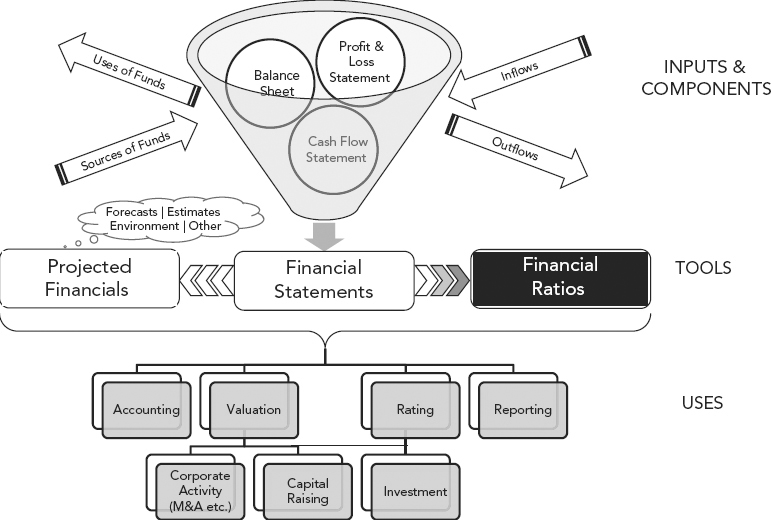Chapter Twelve
Financial Strength and Linkages with Liquidity
THIS CHAPTER ZOOMS OUT FROM the focused discussion on working capital and liquidity and looks at these aspects in the context of the enterprise’s financial strength. We review the key areas of the firm’s financials, highlight some of the important ratios, and finally look at a case study that shows a practical instance of Treasury restructuring in the context of a crisis in liquidity and financial strength.
IMPORTANCE OF COMPANY FINANCIALS
The balance sheet and sources of capital and liquidity, and thus the current and expected financial strength of an organisation, form a core part of the Treasurer’s responsibilities. Here we review the universe of a firm’s financial statements (see Figure 12.1) and their utility for different users.
FIGURE 12.1 Role of Financial Statements

The balance sheet, profit and loss statement, and cash flow statement form the core of the firm’s financial statements. The balance sheet contains the Liabilities, or the sources of funds, and the value of assets, the utilisation of these funds. The profit and loss or income statements show the income and expenditure elements by category, while the cash flow statements highlight the firm’s inflows and outflows. Coupled with estimates and forecasts of how the business and relevant expenses are expected to perform, the financials of the enterprise ...
Get The Handbook of Global Corporate Treasury now with the O’Reilly learning platform.
O’Reilly members experience books, live events, courses curated by job role, and more from O’Reilly and nearly 200 top publishers.

